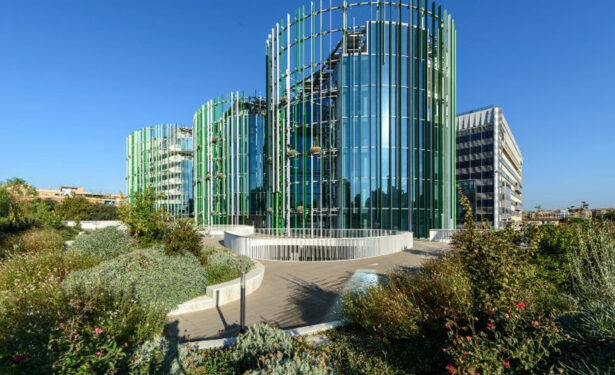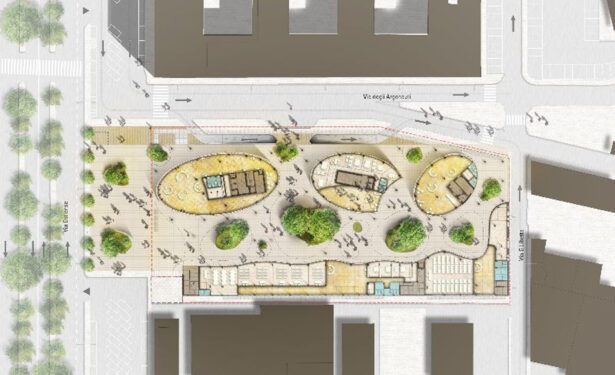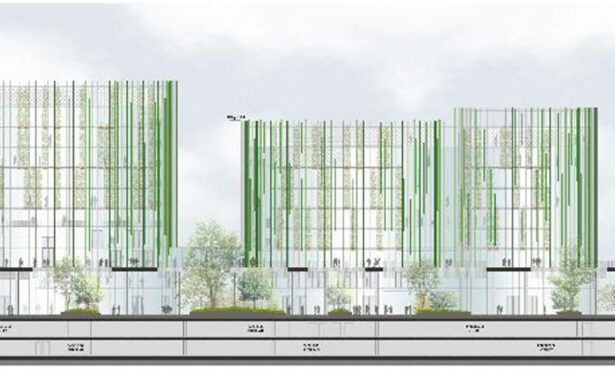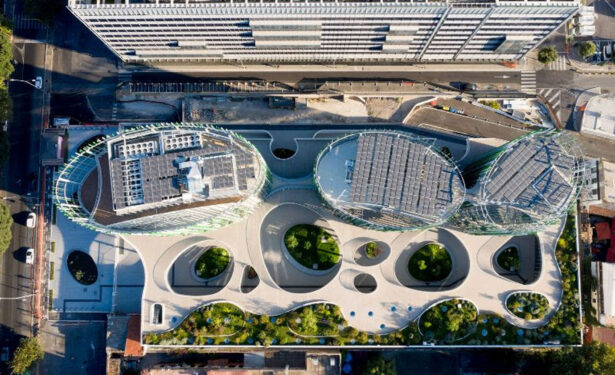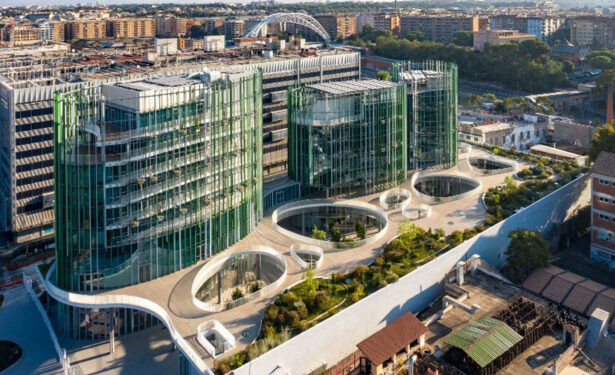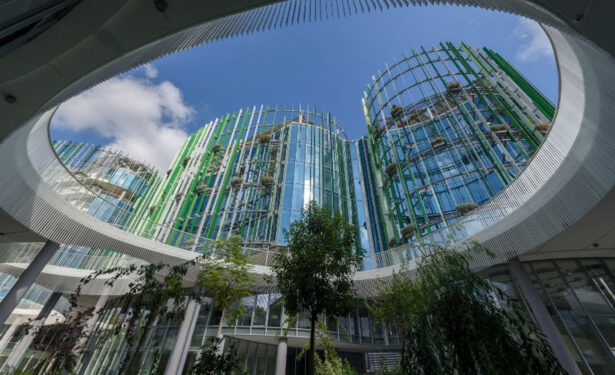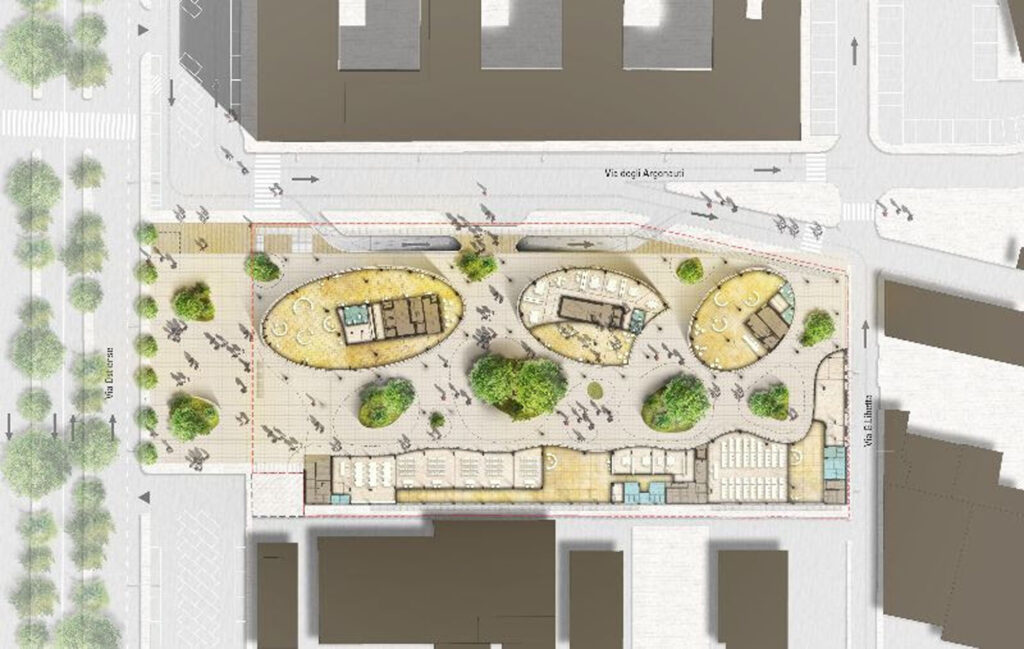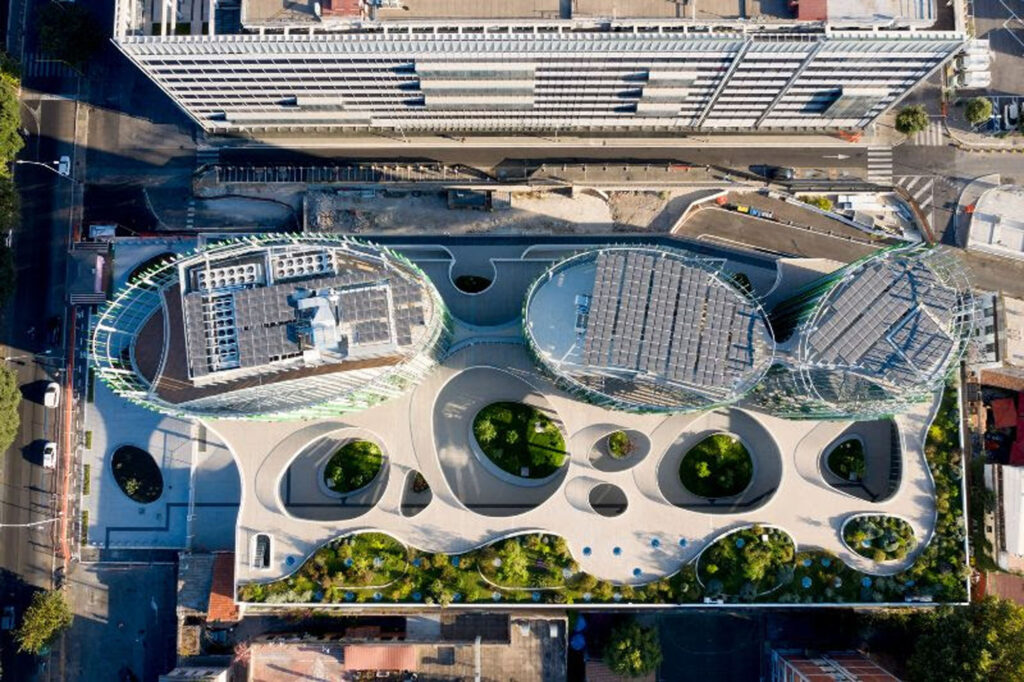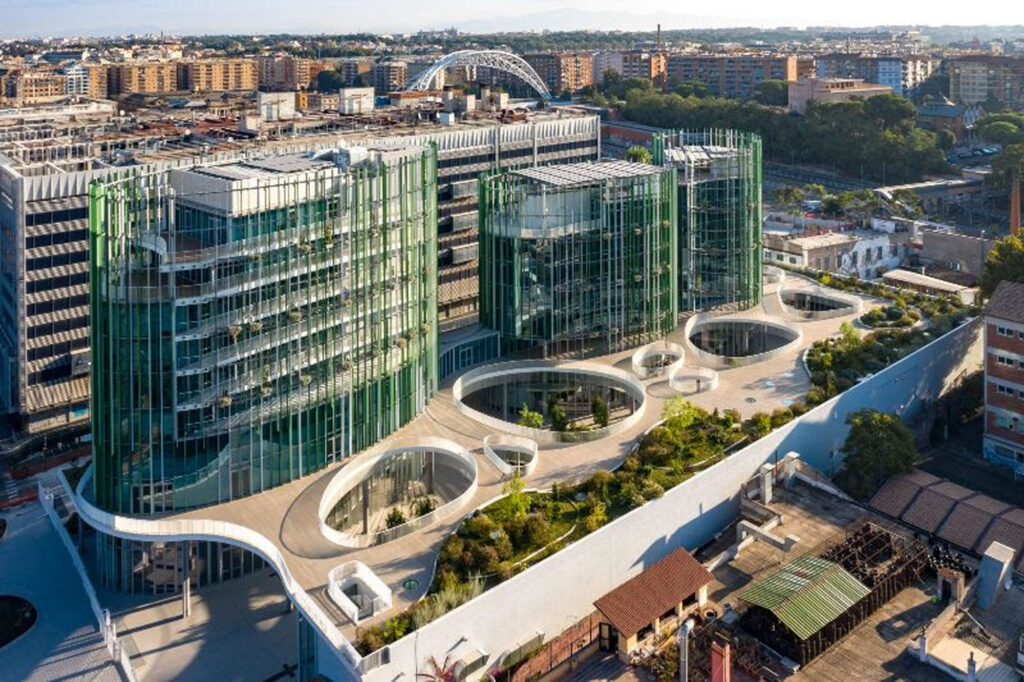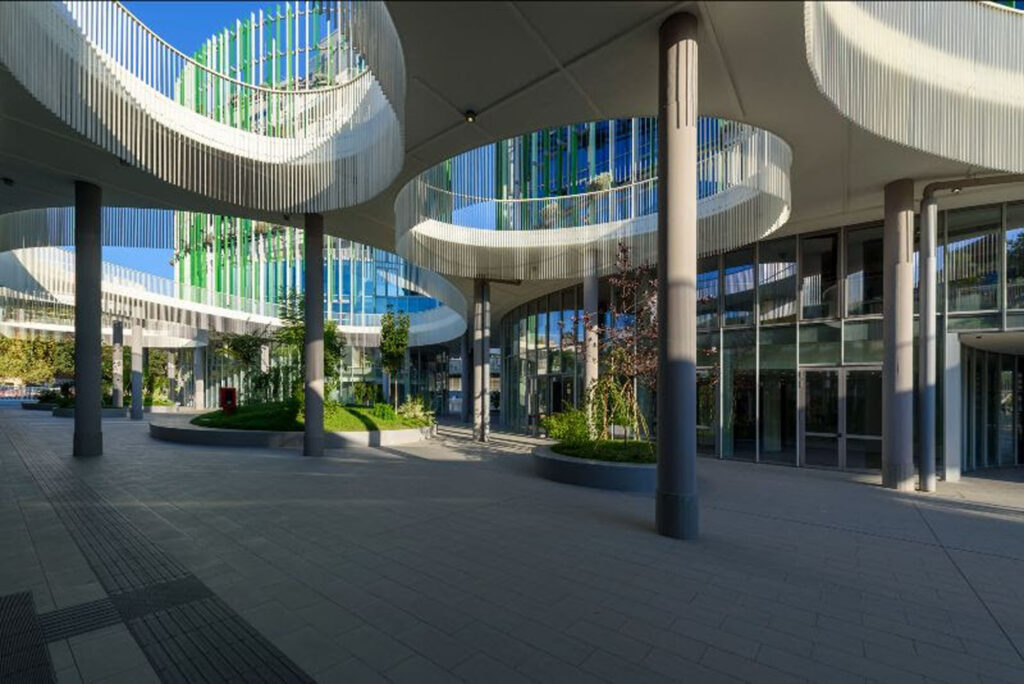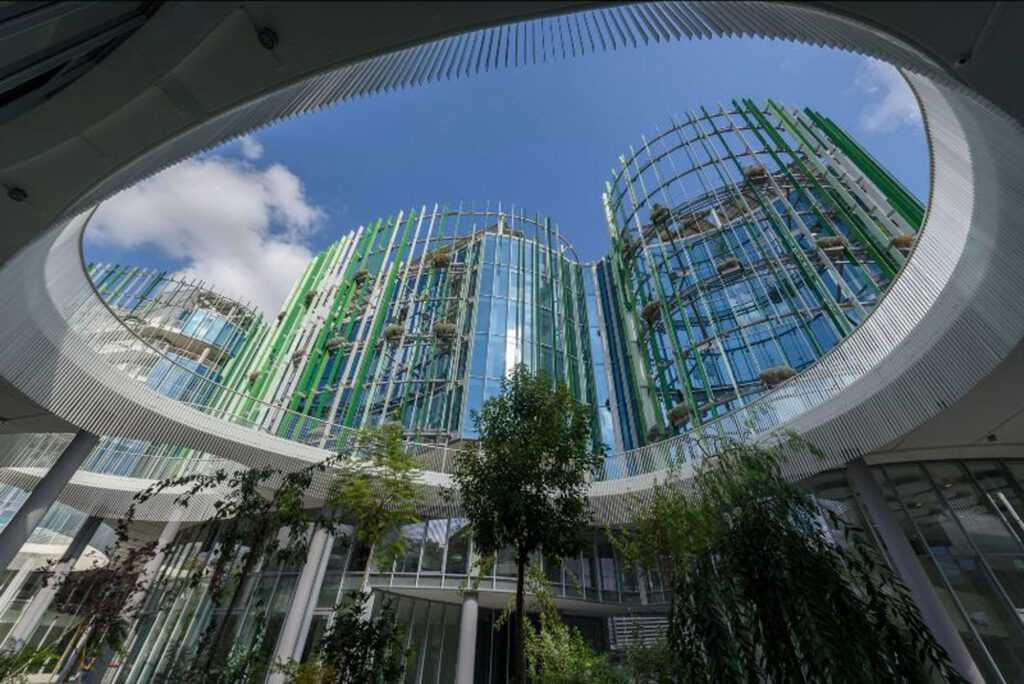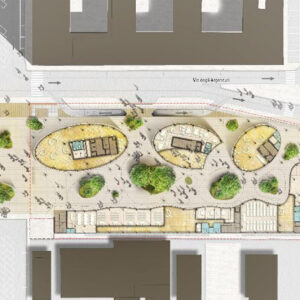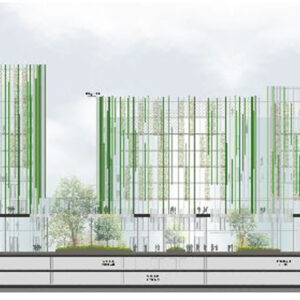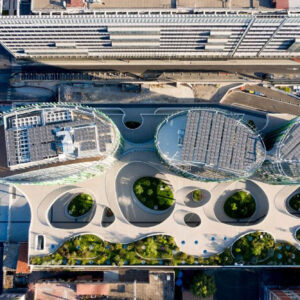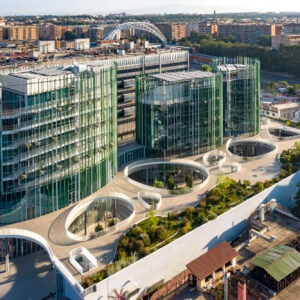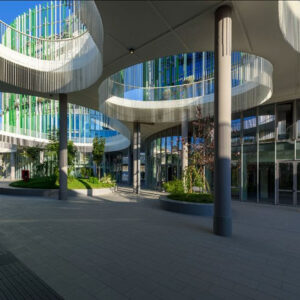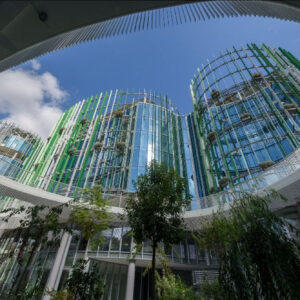- 13 December 2022
- 1887 defa okundu.
The Rectorate of Roma Tre
Three elliptical green and white steel-framed towers, a glass-faced auditorium with a street frontage, a new public piazza and a raised “hanging garden” are the key distinguishing elements of the Rectorate of Roma Tre, a striking new development designed by Mario Cucinella Architects.
Three elliptical green and white steel-framed towers, a glass-faced auditorium with a street frontage, a new public piazza and a raised “hanging garden” are the key distinguishing elements of the Rectorate of Roma Tre, a striking new development designed by Mario Cucinella Architect.
A climatically sensitive and contemporary university campus for Rome
Three elliptical green and white steel-framed towers, a glass-faced auditorium with a street frontage, a new public piazza and a raised “hanging garden” are the key distinguishing elements of the Rectorate of Roma Tre, a striking new development designed by Mario Cucinella Architects at the heart of Rome’s third university.
Roman Regeneration
Sited adjacent to the busy Via Ostiense – the route of the ancient road from the city of Rome to the port of Ostia – the Rectorate projects a new image for Roma Tre while picking up on elements of the historic architecture and engineering of this former industrial quarter to the southwest of the city developed in the first decade of the 20th Century and transformed in recent years into a centre of education and cultural activity. Founded in 1992, Roma Tre has made extensive use of abandoned industrial buildings. The university is part of a wider redevelopment of the area that will include new housing in the future.
For Mario Cucinella, “The Rectorate of Roma Tre wants to be an opportunity for students to take part in this new environment. From the start of the design stage, we have given a lot of value to the auditorium around which the scheme revolves. We wanted it to be transparent and visible from the street so people passing by can see the activities – conferences, meetings and exhibitions – that will take place here. We want the university to project out to the city and for people outside to feel that they, too, are welcome here.”
Layered Solar Shading
From the new public piazza, the three towers, with concrete cores, rise through apertures cut into the mezzanine level “hanging garden”, which serves as a semi-public gathering space. The towers are faced with a trellis work of steel columns, glazed in parts, and open in others. The effect is of a permeable, shaded, and well-ventilated architecture. It is also a reference to the Ostiense quarter’s well-known 90-metre gasometer, a filigree steel structure that, dating from 1937, occupies a prominent site on the banks of the Tiber close to Roma Tre. This structure once gave new energy to Rome: the new Rectorate aims to give an equally new if different energy to the city through its animated design and its purpose as a seat of research, teaching, and learning.
The three intersecting blocks house the university’s management and administrative centres, a new language centre and the auditorium. They are elliptical in plan and section in order to present the least surface area to the East and West. As such, they curb the glare of the rising and setting sun while reducing heat gain in the summer months. The gardens to the south of the towers with their deciduous trees, aromatic plants and lawns provide additional shade and natural colouring as well as shelter throughout the seasons, as does the ground level public piazza. Offices and meeting rooms are arranged around the perimeter of the towers to maximise natural lighting and ventilation.
The Rectorate project, says Mario Cucinella, is “a tangible sign for future architects that it is possible to design without neglecting the environment and while continuing to innovate.”
